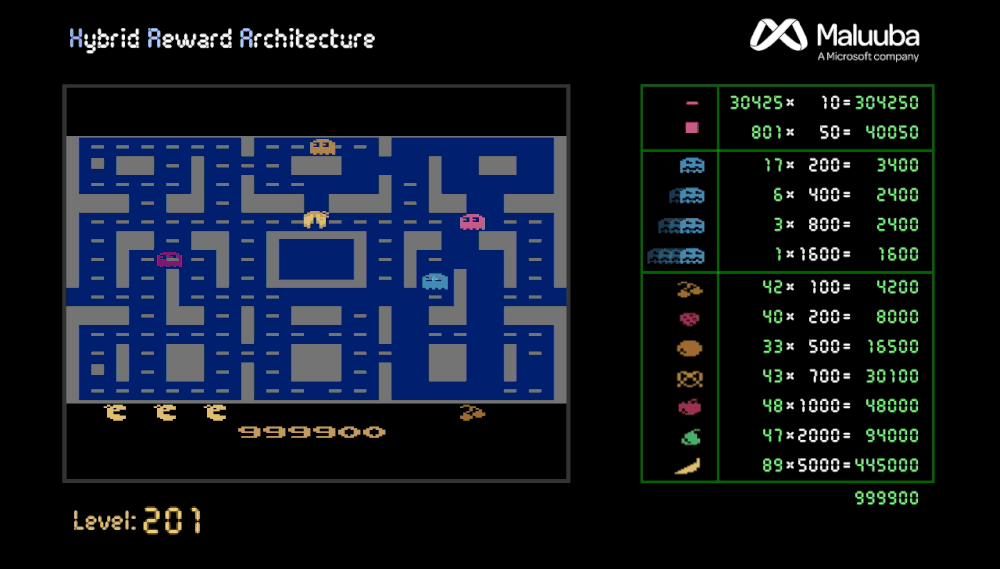A Microsoft artificial intelligence has achieved the ultimate high score in Ms. Pac-Man, maxing out the counter at just under a million points.
With its randomly-generated ghost movements, Ms. Pac-Man has proven a tough nut for AI to crack, as it cannot simply learn the patterns that govern the ghosts’ movements. Maluuba, an artificial intelligence company recently acquired by the tech giant, succeeded in outwitting the hungry ghosts by breaking their gaming algorithm into around 160 different parts. They say it took less than 3,000 rounds of practice to achieve the feat, something never done by a human. The researchers didn’t even know what would happen when they hit seven figures, Wired reports. They were somewhat disappointed to find the score simply resets to zero.
Arcade games like Pac-Man, along with many other types of games have a nearly infinite amount of possible scenarios. Ms. Pac-Man has somewhere around 1o^77 feasible game states, far too many to map out best practices for each one. Absent a perfect strategy, the next best thing is to narrow down movements that are the least worst for any situation. Maluuba’s AI does this by assigning each edible bar, fruit and ghost its own function, and each and every one gets a voice in determining how Ms. Pac-Man will behave. Their recommendations are weighted, and the final decision comes from a central aggregator which weighs each component and decides what to do. They go into further detail in a paper posted to their website.
This gave it an edge in a game where the movements of life-ending ghosts and reward-giving fruits are partially random, meaning that the algorithm must change its mind on the fly. This is somewhat similar to the challenges faced by poker-playing AI’s, who must deal with both randomness and human irrationality in making their decisions.
While notable, Maluuba’s achievement is for the moment merely a flashy headline. They say that their decentralized approach to AI could see applications in the worlds of sales and finance in the future though, where algorithms must similarly deal with a host of random variables at once. In addition, having decisions made by a collection of actors, instead of just one, makes it easier to track the algorithm’s thinking. This could alleviate pressing ethical concerns regarding a future where life-altering decisions could fall into the hands of AI. Knowing how and why a computer reached a particular decision allows us to better judge whether its thinking lines up with our own morals and values.
